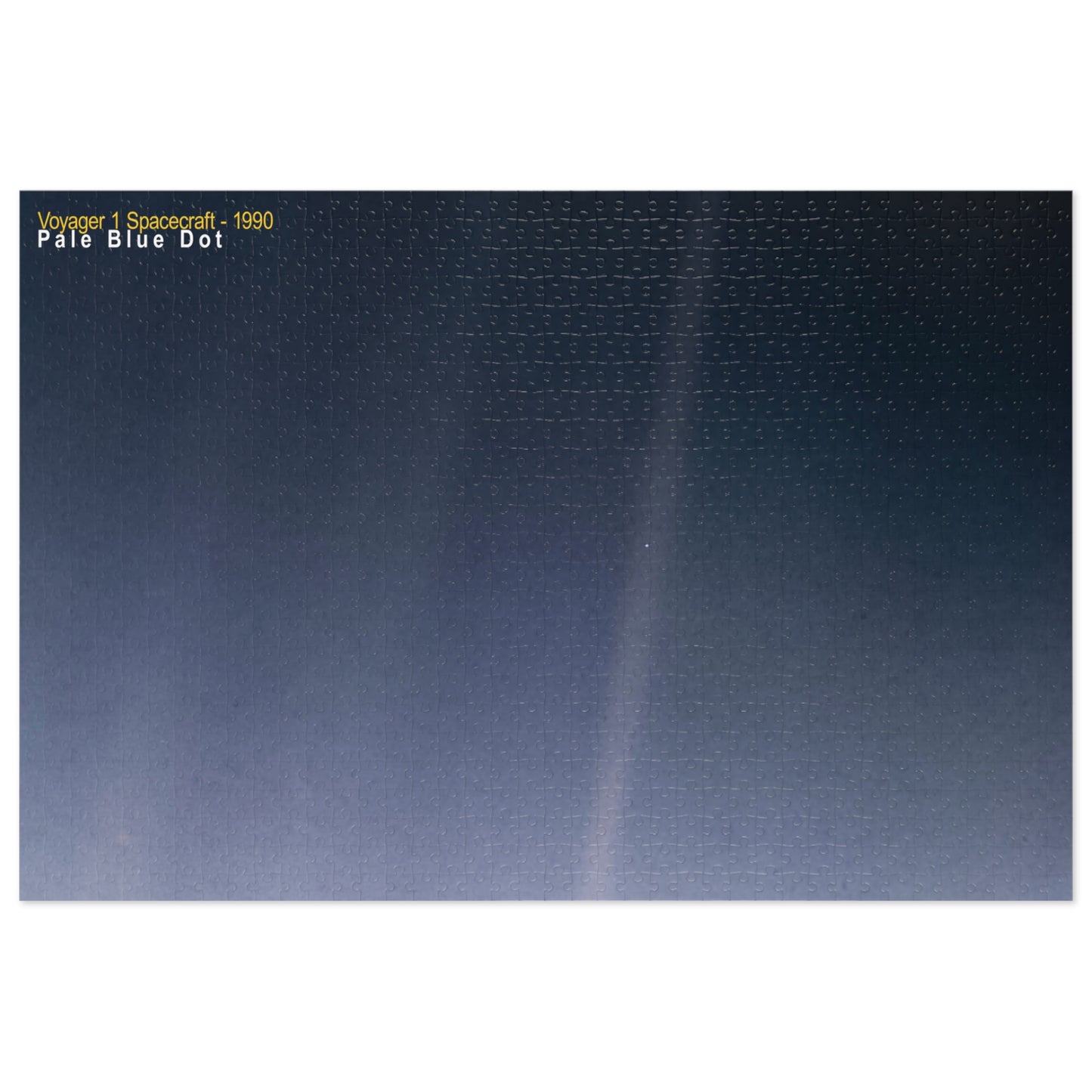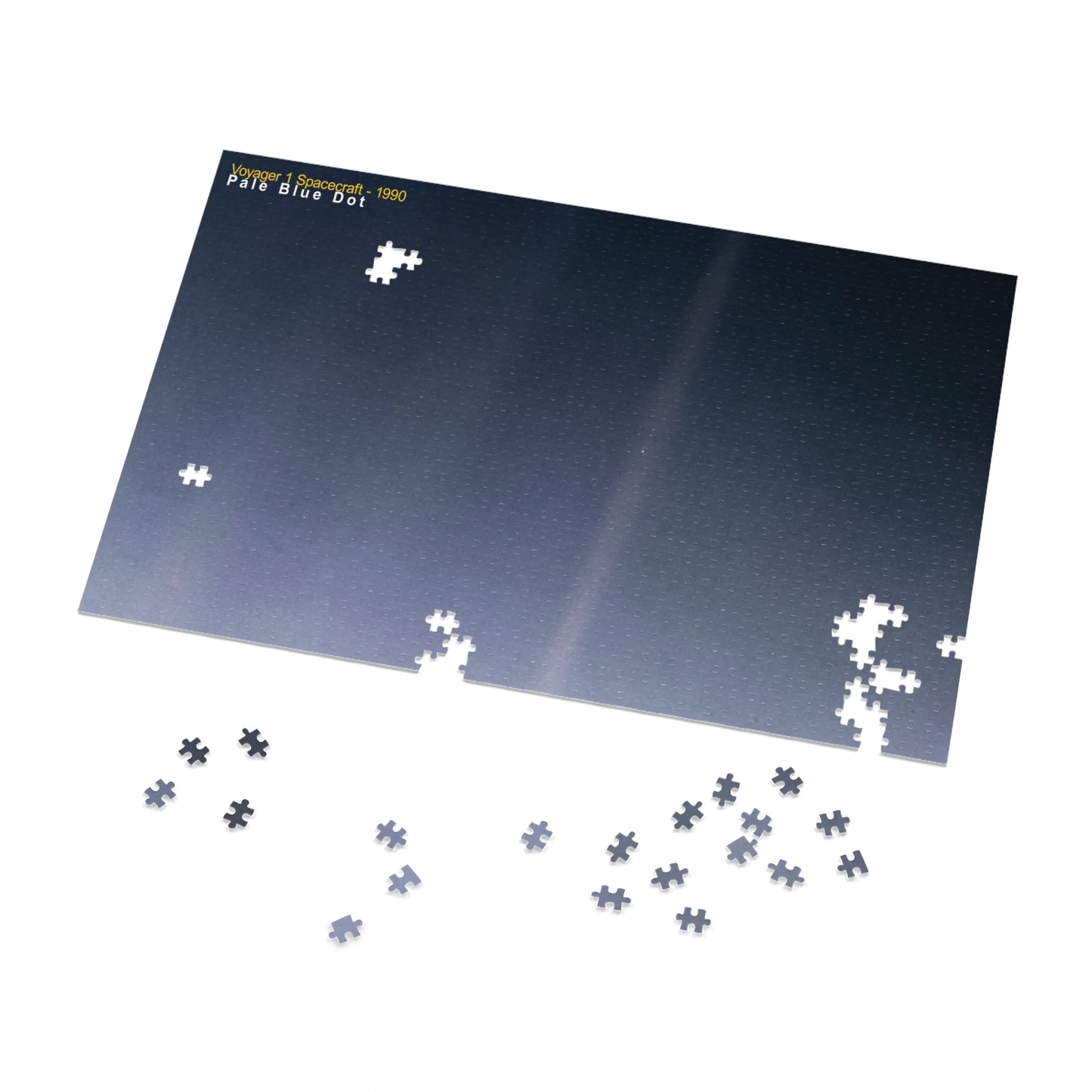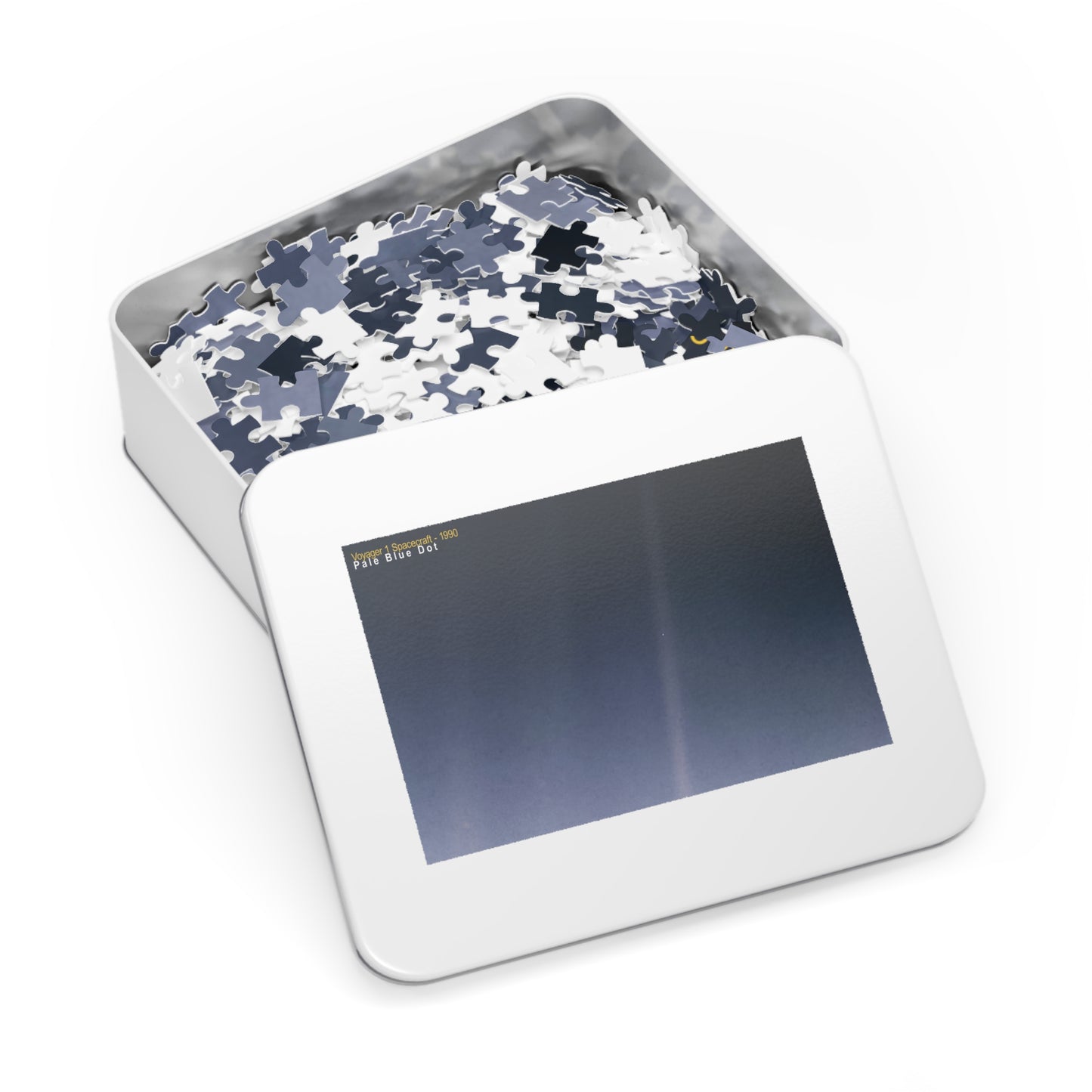Pale Blue Dot, Jigsaw Puzzle
Pale Blue Dot, Jigsaw Puzzle
Couldn't load pickup availability
Unveiling the Mysteries of the Cosmos: Dive Deep with Our Galaxy Puzzles!
Embark on a challenging and rewarding journey with stunning images.
A Universe of Wonder: Lose yourself in breathtaking views of distant galaxies, nebulae, and star clusters captured by the most powerful telescope ever built.
A Challenge Worthy of Any Stargazer: Choose from various puzzles to test your skills.
Sharpen Your Mind: As you piece together the cosmos, you'll develop problem-solving abilities, logical reasoning, and concentration.
Become an astronaut of the mind and explore the universe from the comfort of your home!
Pale Blue Dot:
Voyager 1 - 1990
The view was obtained on February 14, 1990, just minutes before Voyager 1's cameras were intentionally powered off to conserve power, as the probe, along with its sibling, Voyager 2, would not make close flybys of any other objects during their lifetimes. Shutting down instruments and other systems on the two Voyager spacecraft has been a gradual and ongoing process that has helped enable their longevity.
Spacecraft: Voyager 1 (as part of the Voyager program, which also includes Voyager 2).
Date Taken: February 14, 1990.
Distance: Approximately 3.7 billion miles (6 billion kilometers) from the Sun, past the orbit of Neptune.
What it shows: Earth appears as a tiny, single-pixel point of light within a ray of scattered sunlight.
Significance: The photograph was taken at the suggestion of astronomer Carl Sagan, who was a member of the Voyager imaging team. He championed the idea of turning the camera back for one final image before turning the cameras off forever to conserve power.
Legacy: The image inspired the title of Sagan's 1994 book, Pale Blue Dot: A Vision of the Human Future in Space, in which he famously wrote:
"Look again at that dot. That's here. That's home. That's us." The photograph is a powerful reminder of Earth's fragility and its place as a "lonely speck in the great enveloping cosmic dark."
Image Credit: NASA
Share






